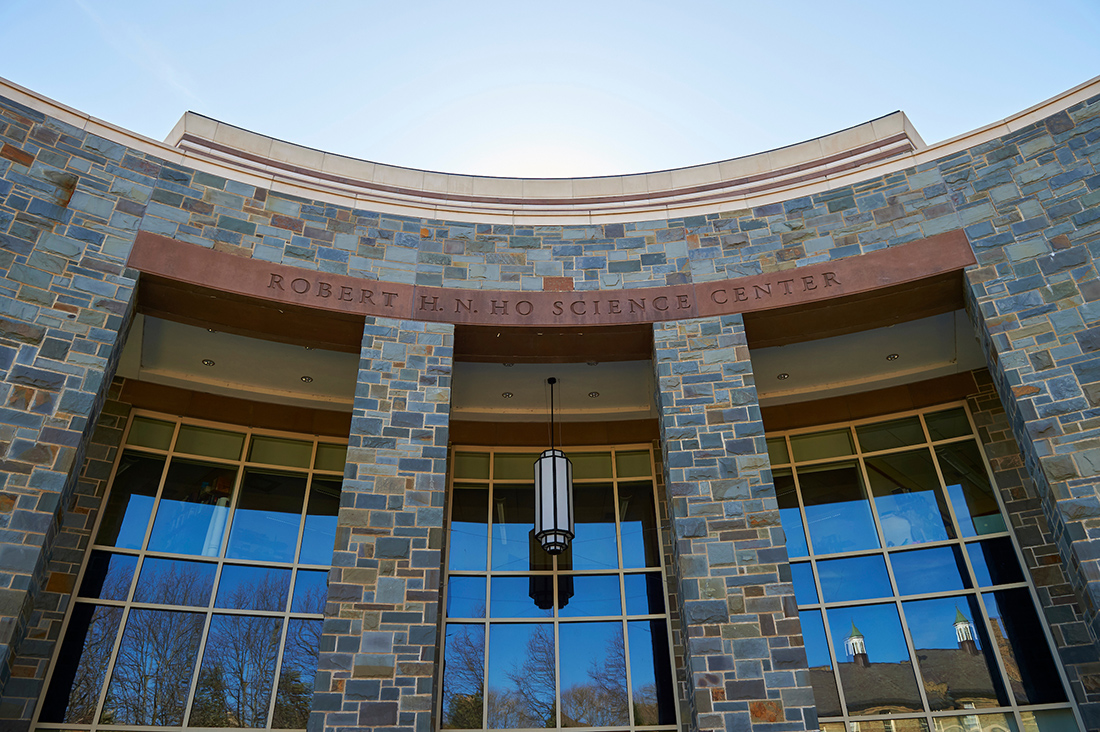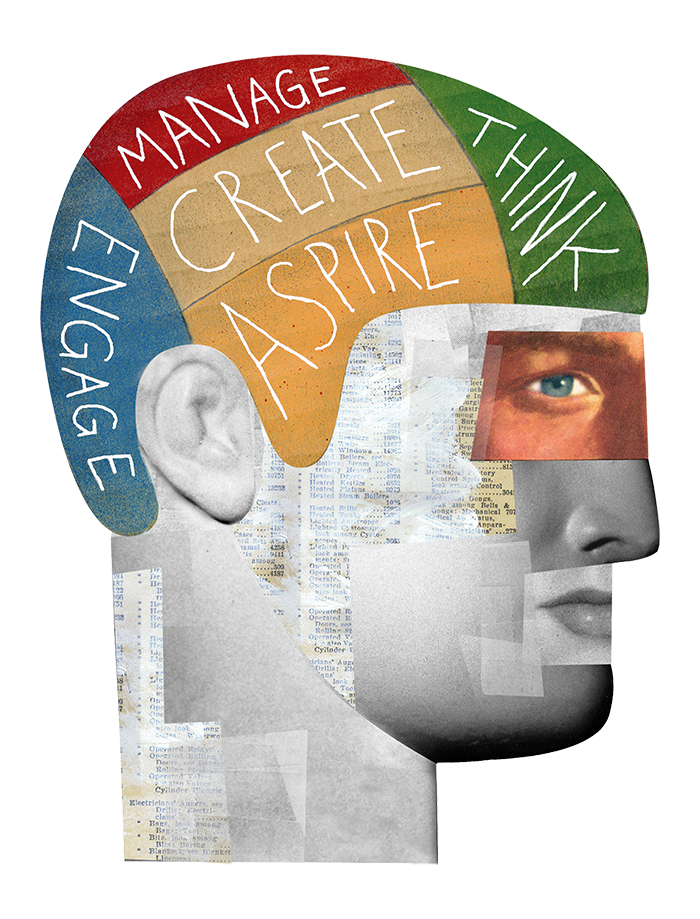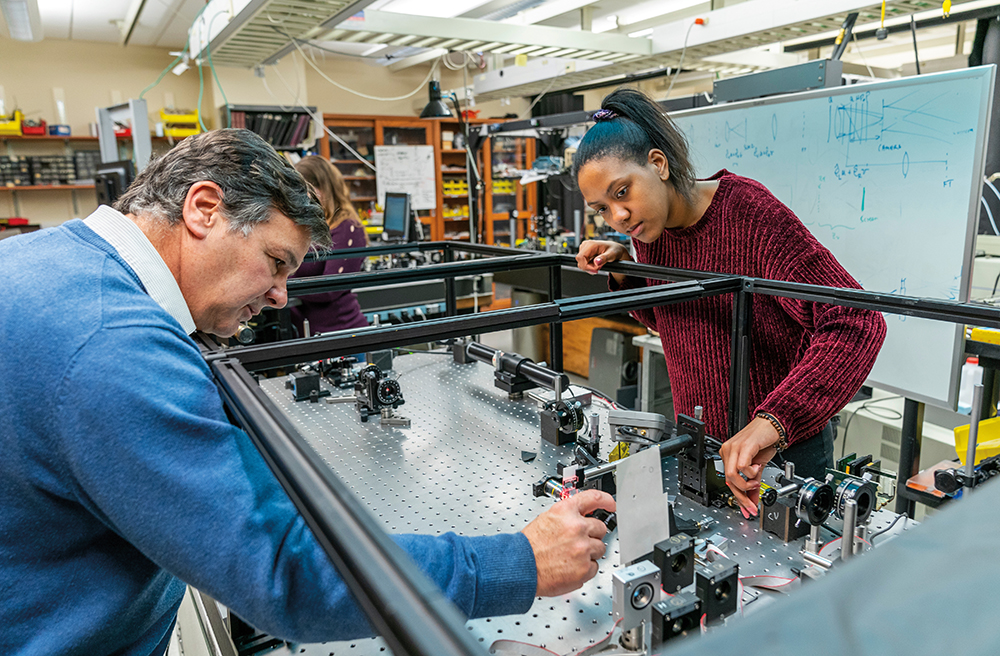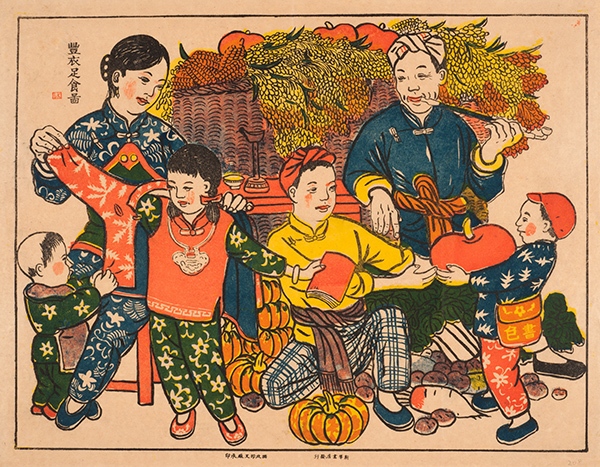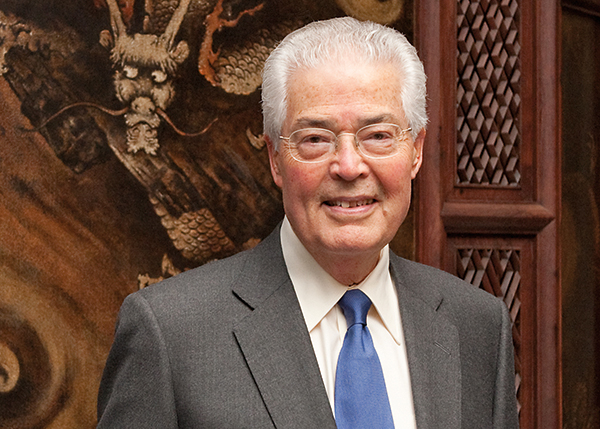The legacy of Robert H.N. Ho ’56, H’11 at Colgate builds scientific and cultural understanding, as well as community.
There is a Chinese proverb for gratitude: “Drink water, remember source.” Trustee Emeritus Robert Hung Ngai Ho ’56, H’11 shared that proverb at the dedication of the Colgate interdisciplinary science center named in his honor in 2008.
The Hong Kong native credits his Colgate education for helping him develop a “well-rounded worldview.” As such, Ho has included the University in his international, multifaceted wellspring of support, through which he expresses a deep commitment to advance scientific knowledge and health care, build understanding of China and its culture, and create meaningful experiences for students and communities.
So, this past January, when Ho confirmed a $15 million gift to establish the Robert Hung Ngai Ho Mind, Brain, and Behavior Initiative, he made a significant addition to a legacy that has helped shape Colgate’s physical and intellectual landscape for more than a quarter century.
Robert Hung Ngai Ho Mind, Brain, and Behavior Initiative
How do our genes influence our decision-making? What can birdsong tell us about autism? What determines voting behavior or economic choices? Can we conquer social biases we don’t know we have?
With the Robert Hung Ngai Ho Mind, Brain, and Behavior (MBB) Initiative, Colgate’s faculty seeks to answer such questions by inspiring the intergenerational transfer of insight into evidence-based approaches to critical problems in human existence.
Connections between mind, brain, and behavior form a complex feedback loop.
“Gene-directed development gives rise to neural systems that guide perception, cognition, language, thought, emotion, and behavior,” says Carrie Keating, chair, psychological and brain sciences. “Behavior, in turn, influences the way brains and minds develop.”
“Mr. Ho’s gift will establish a new genetics and genomics center and enhance brain imaging and human and animal behavior labs to allow for cutting-edge student and faculty research,” says Krista Ingram, biology department chair.
A renovated and expanded Olin Hall will synergize interaction in psychological and brain sciences and biology. Further, the initiative will engage faculty and students from disciplines across campus, in philosophy, computer science, physics, economics, the arts, and linguistics, to name a few.
Research will address areas such as mental health, racism and prejudice, leadership, decision-making, sleep, and language learning and gesture. “We have the ability to create novel ways of thinking, through rigorous transdisciplinary research made accessible to the public,” Keating says.
With additional funding still to be raised, campus teams are refining the initiative’s details — both the Olin Hall project, to be completed in summer 2022, and the development of campuswide programs.
The MBB Initiative, says President Brian W. Casey, “will promote creativity across disciplines and become a point of distinction for Colgate.”
Advancing Scientific Knowledge
The MBB Initiative builds upon the bedrock of Colgate’s successes in the sciences, many of which are based in the Robert H.N. Ho Science Center. At its dedication in 2008, Ho himself predicted that the most enduring gift of the interdisciplinary building would be how students and faculty would use it to “explore the ever-growing challenges modern science presents.”
The number of students majoring in the natural sciences division has grown by 50 percent since 2010, and the division’s departments serve 100 percent of students overall. The facility has also helped Colgate attract a new generation of professors who are committed to excellence in both research and teaching, which in turn has yielded external research funding. When Colgate tied for fourth nationally for active grants among predominantly undergraduate institutions in 2017, 26 of the 32 grants it had received (National Science Foundation [NSF], National Institutes of Health [NIH], National Aeronautics and Space Administration [NASA]) were in the sciences.
Also a community resource, the center is a popular campus venue for special events, from lectures by visiting scholars to alumni gatherings. Each year, 2,000 school children visit the center; Colgate student volunteers lead a hands-on science program in the Ho Tung Visualization Lab, Robert Linsley Geology Museum, and the greenhouse.
Beyond the rigorous teaching and research conducted in classrooms and labs, the following are just two of the center’s distinctions.
Ho Tung Visualization Lab
With more than 80,000 visits to date, the Vis Lab is a treasured resource campuswide and in the region. At this full-dome immersive theater, students (with staff and faculty support) create original shows and learning modules for campus instruction and the public. The skills students gain include script writing, digital photography and videography, virtual reality, 3D animation and modeling, computer programming, and sound design.
The Vis Lab’s first full-dome show, The Making of a Star and Her Entourage, traces the evolution of humankind’s understanding of the universe. The show’s creation involved a dozen students and Professor Jeff Bary (physics and astronomy). Funded by a grant from NASA and Chandra XRay Observatory, it has now been presented at 12 planetariums nationwide. Beyond astronomy, other original productions range from Virtual Galapagos to Socrates on Death Row.
Following his 60th Reunion in 2016, Ho made an additional gift to upgrade the Vis Lab, which is named in honor of his grandfather, Sir Robert Ho Tung. “For years, I have said what my grandfather told me: ‘Before you receive, you must learn how to give,’” Ho says.
Recent courses in the Vis Lab
→ Galileo, the Church, and the Scientific Endeavor
→ Core: Middle East
→ Major Hispanic Authors
→ Gender, Justice, and Environmental Change
→ Experimental Animal Behavior
Research Collaborations
U.S. forests are under siege by the Asian jumping worm, an aggressive invasive species whose voracious appetite is wiping out food and habitat for native wildlife.
In November 2018, professors Damhnait McHugh (biology) and Tim McCay (biology and environmental studies) hosted a symposium for 21 international scientists. This group — soil scientists, population biologists, plant ecologists, and taxonomists — is collaborating to better understand ongoing invasions. According to McHugh, Colgate did not have adequate facilities to host such events before the Ho Science Center was built.
Since the November gathering, they’ve submitted a major proposal to the NSF, are preparing a second proposal for a research coordination network through the NSF, and are writing a paper summarizing their understanding thus far.
Research that Feeds Teaching
For David Robinson (history), the Robert Hung Ngai Ho Chair in Asian studies creates a virtuous cycle in furthering his scholarship and teaching. Established in 1993, the endowed professorship provides time and funding for extensive field research.
Robinson studies the history of the 13th to 16th centuries in China. Gaining access to primary sources in Beijing, Shanghai, Taiwan, and provincial sites has enabled him to publish three monographs (Chinese translations of two will appear this year) and an annotated translation since his appointment in 2010. His most recent works — In the Shadow of the Mongol Empire: Early Ming China and Ming China and Its Allies: Imperial Rulership in Eurasia (both forthcoming, Cambridge University Press) — are “attempts to think about early modern China’s rich and diverse connections to neighboring polities,” he says.
This spring, Robinson is teaching from documents written by the first emperor of the Ming Dynasty (Zhu Yuanzhang) to Japan, Korea, his own subjects, and representatives of the Mongols. He completed the first English translations of the documents last year while at the Academia Sinica research center in Taiwan.
“This is a direct window into how Chinese leaders of the past have used history for political ends,” he says — and Robinson’s students are getting access to the documents before anyone else.
Immersive Cultural and Language Learning
The day Elizabeth Gonzales ’19 comprehended an entire page of a Chinese newspaper last summer, she knew her facility with the Mandarin language had truly blossomed. She had only begun studying it three years prior, but had immersed herself at every opportunity.
“I wanted to learn a language that a lot of people speak and that would prepare me for the future,” she says. Given that her main goal is to work at the Department of State, promoting positive U.S.–China policy and relations, becoming fluent is imperative.
From an extended study course in Beijing, to the semester-long China Study Group, students like Gonzales have the opportunity to study in China and travel to Hong Kong and Taiwan, supported by an endowment Ho established in 1993.
“It’s part of Robert Ho’s vision that our students see all three places,” says Professor John Crespi (Chinese andAsian studies), who has led the study group three times and teaches the Beijing extended study course. “Each place has a different history, a different feel, and they do things in different ways.”
While on the study group in 2016, Gonzales and her classmates interned as greeters at a fashion store. “A retail environment is perfect,” says Crespi, who designed the internship as part of a custom program with CET Shanghai at Donghua University. “A customer comes in, ‘Find me these shoes. I want green,’ and the students have to communicate with them and their Chinese coworkers.” The program was a 2017 GoAbroad Innovation Awards finalist.
Gonzales, an international relations and Chinese major from Dallas, Texas, has returned to China twice more, for a semester with CIEE Shanghai: China in a Global Context, and the CIEE Summer Accelerated Chinese Language Program in Shanghai.
After graduation, she will spend the summer as a Davis Fellow for Peace at Middlebury Language Schools and then a year on a Fulbright teaching scholarship in Taiwan. Following that, she has been accepted to the Hopkins-Nanjing Center for Chinese and American Studies certificate program, with the goal of entering the master’s program there.
Two areas in Lawrence Hall named in recognition of Ho’s support provide welcoming settings for contemplation and learning. Dedicated in 1993, the Robert Ho Center for Chinese Studies includes modern classrooms and a reading room. The stately Ho Lecture Room is the site for many campus gatherings, lectures, and academic courses, including the celebrated Living Writers class.
Moments made possible by Robert H.N. Ho
→ A Year of Chinese Art
The 2008–2009 academic year featured exhibitions of modern Chinese woodblock print art, installation art, and film as well as lectures, performances, and curricular programming. The series allowed students and the community to experience “China’s burgeoning contemporary art scene and explore its traditions,” says art professor DeWitt Godfrey. Ho supported the series in honor of his former professor and friend, Theodore Herman (geography), who had lived and worked in China and donated a large collection of modern Chinese woodcuts to the University.
→ His Holiness the 14th Dalai Lama campus visit
An April 2008 campus visit by His Holiness the 14th Dalai Lama, facilitated by his friend Robert Ho, gave the Colgate community a rare opportunity to see the spiritual leader. The Dalai Lama gave a 90-minute talk about happiness, touching upon inner peace, compassion, truth, and self-care as essential elements to achieving it.
Students also had the chance to hear the Dalai Lama in small-panel discussions on science and religion and the moral and spiritual power of religion and the university.
Jean Brooks, a longtime food service employee, recounted a moment that shows Ho’s habit of connecting people. “I was refilling Mr. Ho’s water glass and he took the pitcher out of my hand, took me over to the Dalai Lama, and said, ‘Your Holiness, I would like you to meet a good friend of mine, whom I see every time I visit Colgate.’ The Dalai Lama took my hand and he laid his cheek on it. I was speechless.”
Robert Hung Ngai Ho ’56, H’11
Robert H.N. Ho’s philanthropy is rooted in a worldview shaped by his family’s and personal life experiences of both privation and privilege. His grandfather, Robert Ho Tung, rose from hardship to become one of Hong Kong’s wealthiest businessmen and philanthropists.
Ho’s father, General Robert Ho Shai Lai, was a leader on the front lines of China’s war with Japan and the head Chinese military delegate to the United Nations. He was decorated by the Republic of China’s president for his civilian role in the development of Taiwan.
Born in Hong Kong in 1932, Robert Ho, with his family, was forced into hiding and escaped to mainland China following the Japanese occupation in 1945. Not long after, the Chinese Communist Revolution precipitated completing his secondary education in the United States.
Ho recalls his years at Colgate as among the happiest of his life. “People there took me in as one of them,” he says. He studied English and history, was a member of Sigma Chi (receiving the national Significant Sig Award), and played soccer and tennis. After graduating, he earned a master’s in journalism from Columbia University, and then worked as the White House correspondent for National Geographic and as a freelance writer, including covering the United Nations. Later, he helped his father to run the family’s Kung Sheung Daily Press, a Chinese-language newspaper group, until they closed it when the handover of Hong Kong to China was signed in 1984. Ho, who with his wife, Greta, has two sons, continued to manage family property and investments in Hong Kong, British Columbia, and the United States.
Ho’s efforts to produce meaningful impact through philanthropy started with Colgate, Buddhist-related initiatives, and health care. In 2005, with his two sons, he launched the Robert H.N. Ho Family Foundation. Based in Hong Kong, the foundation promotes Chinese culture, art education, and Buddhist philosophy through cross-cultural programs worldwide. For his efforts, Ho has been made a member of the Order of Canada, and received the Order of British Columbia. He also received honorary degrees from the University of British Columbia, Hong Kong Academy for Performing Arts, Hong Kong Baptist University, and University of Hong Kong.
Colgate has honored Ho, a trustee emeritus (1996–99) and charter member of the James B. Colgate Society, with a Maroon Citation (2001), the Wm. Brian Little ’64 Award for Distinguished Service (2016), and an honorary doctor of humane letters (2011).

